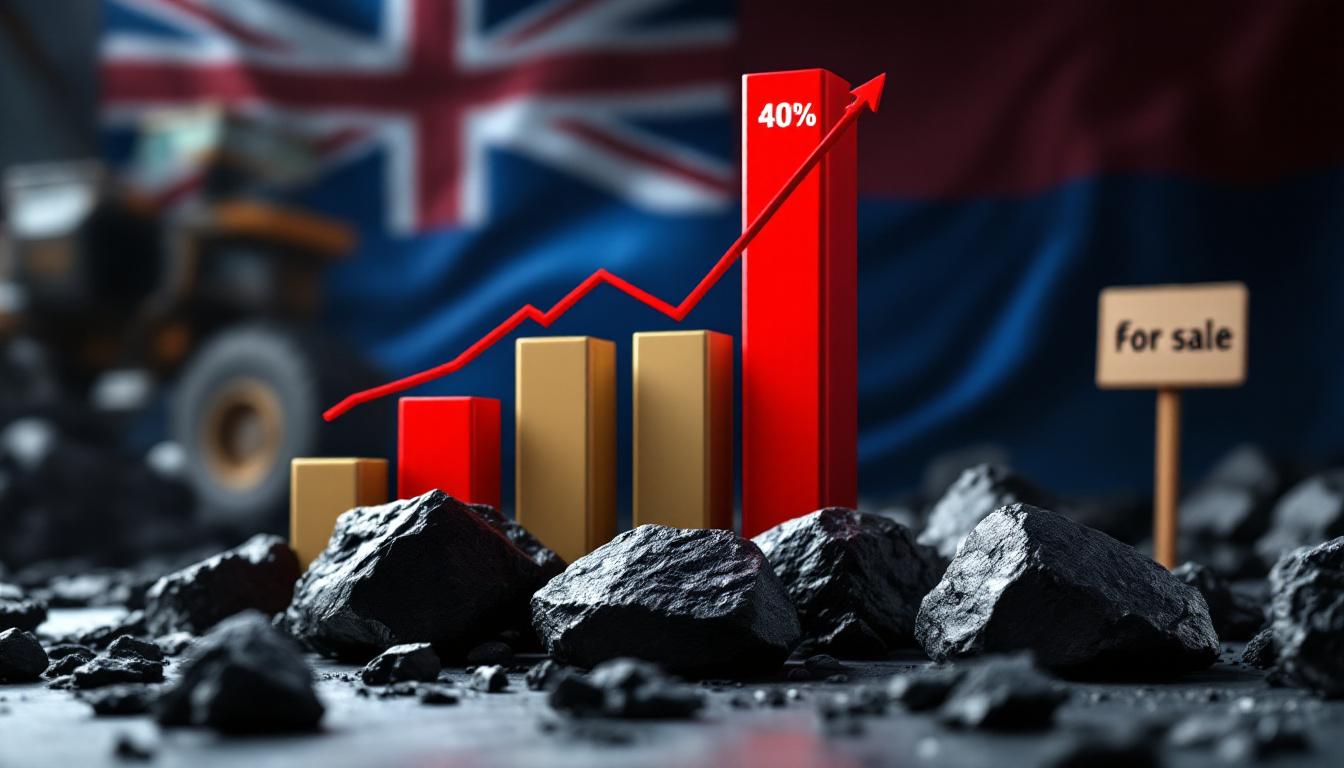How Are Consumption Boosting Policies Affecting Aluminum Markets?
The aluminum market is experiencing notable upward price pressure as domestic consumption-boosting policies gain momentum across major economies. These government initiatives are creating an interesting market dynamic where traditional seasonal patterns intersect with stimulus efforts aimed at revitalizing demand.
Recent Policy Developments Impacting Aluminum Demand
The National Development and Reform Commission (NDRC) has announced plans to distribute the third batch of consumer goods trade-in funds in July 2025. This strategic allocation specifically targets sectors that utilize significant aluminum volumes, including automotive manufacturing, home appliances, and construction materials.
"Domestic policy efforts have boosted demand, and the issuance of trade-in funds has helped enhance the resilience of aluminum consumption in key sectors," according to the latest SMM Aluminum Morning Meeting Summary.
Government authorities have expressed strong commitment to not only implementing existing economic support measures but also introducing new reserve policies designed to counter external uncertainties. This proactive stance signals continued support for aluminum-intensive industries throughout 2025.
On the international front, the European Union is actively considering tariff impact analysis on various US imports to facilitate trade agreements. This development could potentially ease supply chain disruptions that have affected global aluminum markets over the past year.
Market Impact of These Policy Initiatives
The targeted trade-in funds are specifically designed to enhance aluminum consumption resilience across multiple sectors. By incentivizing consumers to replace older products with newer, more aluminum-intensive alternatives, these initiatives create a demand floor even during traditional seasonal downturns.
Supply chain stability stands to improve if the proposed EU-US trade agreements materialize. Reduced tariffs would likely minimize global supply chain disruption risks, indirectly supporting aluminum price stability by ensuring more predictable market conditions.
The combined effect of these policy efforts is creating noticeable upward pressure on aluminum prices. Despite entering what would traditionally be a seasonal demand lull, prices are demonstrating remarkable resilience, supported by the anticipation of policy-driven consumption increases in the coming months.
What's Happening with Current Aluminum Pricing?
The aluminum market is displaying interesting price movements across both domestic and international exchanges. Futures contracts and spot markets reflect the tension between policy support and seasonal demand patterns, creating a complex price environment worth examining.
Current Price Movements in Futures Markets
The most-traded SHFE aluminum 2508 contract recently closed at 20,660 yuan/mt after opening at 20,490 yuan/mt, demonstrating clear upward momentum despite seasonal headwinds. Trading activity remained robust with volume reaching 106,000 lots and open interest standing at 272,000 lots, indicating sustained market participation.
On international markets, LME aluminum closed at $2,585.5/mt after trading in a relatively tight range between $2,580/mt and $2,587.5/mt. This stability in international pricing suggests global markets are balancing similar forces of seasonal weakness against policy-driven optimism.
The futures curve structure is particularly telling, with nearby contracts showing relative strength compared to deferred months—a potential indication that market participants anticipate near-term support from domestic consumption boosting policies and aluminum prices before seasonal patterns potentially reassert themselves.
Spot Market Dynamics
Regional price variations have become increasingly pronounced, with SMM A00 aluminum reported at 20,530 yuan/mt in eastern China, while central China prices stood at 20,360 yuan/mt. This regional divergence reflects differing supply-demand balances across the country's industrial centers.
Spot premiums in eastern markets weakened to a discount of 10 yuan/mt against the SMM average price, with selling pressure described as "the main theme" according to the latest SMM report. This suggests that despite futures strength, physical market participants remain cautious.
The price spread between central China and Shanghai narrowed to -170 yuan/mt, reflecting changing regional dynamics as material flows adjusted to arbitrage opportunities. Central China prices recovered slightly as goods moved toward Shandong and Hebei regions, demonstrating the market's efficiency in responding to regional imbalances.
Why Is Aluminum Demand Showing Mixed Signals?
The demand landscape for aluminum presents a contradictory picture that helps explain current market dynamics. Traditional seasonal weakness is being partially offset by resilience in emerging sectors, creating a nuanced environment that defies simple characterization.
Traditional Sector Weakness
Aluminum processing enterprises, particularly wire, cable, and extrusion manufacturers, have significantly reduced operating rates as they enter the traditional summer off-season. This cyclical pattern affects aluminum consumption every year, but appears particularly pronounced in 2025.
The situation is especially challenging in central China, where processing enterprises have entered semi-shutdown states due to profitability challenges. With input costs remaining relatively high while finished product prices face downward pressure, many processors have opted to minimize operations rather than run at a loss.
Market participants throughout the supply chain are displaying low willingness to purchase, keeping spot prices at relatively low levels despite futures market strength. This purchasing hesitancy reflects uncertainty about near-term demand prospects despite the policy support measures.
New Energy Sector Resilience
In contrast to traditional sectors, the new energy ecosystem—particularly photovoltaic and automotive applications—continues to demonstrate demand resilience. These growth sectors utilize significant aluminum volumes for lightweight structures, heat dissipation, and electrical components.
However, even these bright spots show some mixed signals. The post-June weakening in photovoltaic installation rush demand has reduced some of this support, as the industry transitions from its peak installation period to a more moderate pace in the summer months.
The home appliance sector, which bridges traditional and new energy applications, has shown sharp month-on-month declines in production schedules. This contraction further limits overall demand support, creating additional pressure on aluminum prices that policy measures must overcome.
What's Happening with Aluminum Inventory Levels?
Inventory dynamics are becoming increasingly critical as the market balances between policy support and seasonal demand patterns. Recent data reveals early warning signs that warrant close attention from market participants.
Current Inventory Situation
SMM data shows domestic aluminum ingot inventory decreased marginally by 1,000 mt to 463,000 mt as of June 26. While this daily decline might appear positive, the broader trend reveals a more concerning picture—inventory showed a 14,000 mt increase week-over-week, suggesting underlying accumulation despite the minor day-to-day fluctuation.
Aluminum billet inventory in major domestic consumption areas stood at 142,500 mt, decreasing by 2,000 mt from the previous measurement but increasing by 8,000 mt week-over-week. This pattern mirrors the primary ingot trend, with short-term decreases masking a medium-term buildup.
These inventory patterns reflect the tension between continued production and weakening seasonal demand. With processing enterprises reducing operations, the aluminum value chain is experiencing bottlenecks that result in material accumulation at certain points in the supply chain.
Emerging Inventory Pressures
Initial indicators of inventory buildup pressure are becoming increasingly visible in the data. As the SMM report notes, "With the deepening of the consumption off-season and the increase in casting ingot volumes, inventory began to face certain pressure."
The deepening consumption off-season is a key contributor to inventory challenges. As downstream demand weakens seasonally, material that would normally flow through the value chain begins to accumulate at various points, creating inventory pressure that can eventually weigh on prices.
Increased volumes of casting ingot production are adding another dimension to overall inventory pressure. This production shift reflects manufacturers adapting to changing demand patterns, but also contributes to the overall supply balance that must be absorbed by the market.
How Is the Secondary Aluminum Market Responding?
The secondary aluminum market operates with its own unique dynamics while still being influenced by broader market trends. Recent data shows this segment navigating distinct challenges amid the complex market environment.
Scrap Aluminum Market Conditions
Aluminum scrap market prices have remained generally unchanged despite movements in primary aluminum prices. This price stability reflects the different supply-demand dynamics in the recycling segment compared to primary production.
Regional variations are becoming more pronounced, with Shanghai, Jiangsu, and Shandong regions closely following aluminum price trends with minimal adjustments of 0-50 yuan/mt. Meanwhile, other regions like Jiangxi have shown greater resistance to price changes, creating arbitrage opportunities for traders.
Baled UBC (used beverage can) aluminum scrap has seen cumulative price reductions of 150-200 yuan/mt since the previous week. This more significant adjustment in consumer-derived scrap reflects changing collection economics and processor demand patterns.
Secondary Aluminum Alloy Dynamics
SMM ADC12 prices have stabilized in the range of 19,900-20,100 yuan/mt despite broader market pressures. This relative stability in a key secondary aluminum alloy grade reflects balanced supply-demand fundamentals in this specific segment.
The traditional summer off-season has weakened demand significantly, resulting in sluggish market transactions. Buyers are demonstrating minimal urgency, often purchasing only to meet immediate production needs rather than rebuilding inventories.
The import market for secondary aluminum remains challenging, with imported ADC12 maintaining CIF quotes at $2,430-2,470/mt. These import levels translate to losses of approximately 700-800 yuan/mt for importers, effectively restricting inbound material and supporting domestic pricing.
What's the Short-Term Outlook for Aluminum Prices?
The aluminum market faces a complex near-term outlook as it balances policy support against seasonal pressures. Several key factors will likely determine price direction in the coming weeks and months.
Key Market Tests Ahead
According to SMM analysis, "Aluminum prices will face tests from inventory turning point confirmation and off-season demand pressure in the coming week." This observation highlights the critical importance of inventory trends as a leading indicator for price direction.
The deepening consumption off-season will continue to test price resilience throughout the summer months. Traditional demand patterns suggest further weakness, particularly in construction and general manufacturing sectors, which typically experience reduced activity during this period.
The actual impact of domestic consumption boosting policies and aluminum prices will become clearer as implementation progresses. While the announced trade-in fund allocation in July creates positive expectations, the market will closely monitor actual disbursement and resulting consumption increases to gauge effectiveness.
Price Direction Indicators
Aluminum prices are expected to fluctuate at relatively high levels in the immediate term, supported by the anticipated policy stimulus but constrained by seasonal demand weakness. This creates a potential trading range rather than a clear directional move.
Government stimulus measures and potential trade agreement benefits provide significant upward support for prices. These policy initiatives create a psychological floor for the market, with traders reluctant to establish aggressive short positions ahead of implementation.
However, seasonal demand weakness and inventory buildup create counterbalancing downward pressure. If inventory accumulation accelerates beyond current rates, this could eventually overwhelm policy support and trigger more significant price corrections.
How Can Market Participants Navigate Current Conditions?
For those involved in the aluminum market, the current environment requires careful strategic positioning to manage both risks and opportunities during this period of policy-seasonal tension.
Strategic Considerations for Market Participants
Inventory management should be a primary focus, with close monitoring of both official statistics and on-the-ground conditions. Early detection of shifting inventory trends can provide critical signals for price direction before broader market recognition.
Regional arbitrage opportunities warrant attention given the narrowing but still significant price spreads between regions. The current 170 yuan/mt differential between central China and Shanghai creates potential trading strategies for those with logistical capabilities to move material between markets.
A sector-specific approach is essential given the divergent demand patterns. Differentiating between traditional sectors experiencing seasonal weakness and more resilient new energy transition insights applications allows for more targeted business strategies, whether in procurement, sales, or production planning.
Risk Management Approaches
Price volatility preparation is prudent as policy effects and seasonal factors interact in potentially unpredictable ways. Using appropriate hedging instruments on both SHFE and LME can help manage this price risk, particularly for those with exposure to both domestic and international markets.
Supply chain flexibility has become increasingly valuable in the current environment. Maintaining optionality in sourcing, production, and delivery helps businesses respond effectively to potential shifts in regional dynamics or sudden policy-driven demand changes.
Regular assessment of policy impact is critical for effective decision-making. As consumption-boosting policies roll out, market participants should establish clear metrics to evaluate their actual market impact rather than relying solely on initial announcements or general market sentiment.
FAQs About Aluminum Market Conditions
How are domestic consumption boosting policies specifically supporting aluminum demand?
Domestic consumption boosting policies support aluminum demand through targeted consumer goods trade-in programs that stimulate purchases in aluminum-intensive sectors. The NDRC's upcoming July 2025 fund allocation will provide financial incentives for consumers to replace older products with newer alternatives that typically use more aluminum in their construction. This creates demand resilience even during traditional seasonal downturns, as consumers respond to the economic incentives regardless of seasonal factors.
What is causing the regional price differences in the aluminum market?
Regional price differences are primarily driven by local supply-demand balances, transportation costs, and production adjustments in specific areas. Central China has experienced more significant production reductions due to profitability challenges, creating supply tightness in those regions. Meanwhile, eastern markets have seen increased supply pressure from material flowing from southern China, resulting in the current -170 yuan/mt spread between central China and Shanghai prices. These regional differentials create natural arbitrage opportunities that gradually self-correct as material flows adjust.
How is the new energy sector affecting aluminum demand differently from traditional sectors?
The new energy sector demonstrates more consistent aluminum demand due to structural growth rather than cyclical patterns. While traditional sectors like construction and general manufacturing follow predictable seasonal cycles with summer slowdowns, new energy applications in electric vehicles and solar installations continue expanding based on longer-term adoption trends. This creates partial insulation from typical seasonal demand drops, though even these sectors show some monthly variation, as evidenced by the post-June slowdown in photovoltaic installations noted in recent market reports.
What inventory levels would signal a significant market direction change?
A sustained weekly increase of 15,000-20,000 mt or more in primary aluminum inventories would signal significant market weakness, as this would exceed normal seasonal accumulation rates and suggest more fundamental demand problems. Conversely, consistent weekly drawdowns exceeding 10,000 mt would indicate strengthening fundamentals despite seasonal headwinds. The market is particularly sensitive to inventory trends during seasonal transition periods, making the current weekly increase of 14,000 mt a critical indicator that warrants close monitoring for potential acceleration.
How might international trade developments impact domestic aluminum markets?
International trade developments, particularly potential EU-US tariff reductions, could stabilize global supply chains and reduce market fragmentation. While the direct volume impact on Chinese markets might remain limited, improved global trade relations typically enhance overall market sentiment and reduce supply disruption risks. This creates a more predictable environment for pricing and reduces the risk premium associated with potential trade conflicts. For market participants engaged in both domestic and international trade, these developments could significantly affect arbitrage opportunities and supply chain optimization strategies.
Further Exploration:
Readers interested in deeper insights into aluminum market dynamics can explore related educational content through services like Shanghai Metal Market's aluminum industry chain database and spot metal historical price services. These resources offer additional perspectives on long-term iron ore trends and copper price outlook, as well as updates on the EU's critical materials facility that shape the broader market environment.
Looking to Catch the Next Major Mineral Discovery?
Discovery Alert's proprietary Discovery IQ model instantly identifies significant ASX mineral discoveries, transforming complex data into actionable investment insights for both short-term traders and long-term investors. Explore why historic discoveries can generate exceptional returns by visiting Discovery Alert's dedicated discoveries page and begin your 30-day free trial today.




